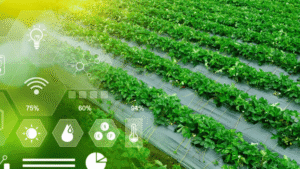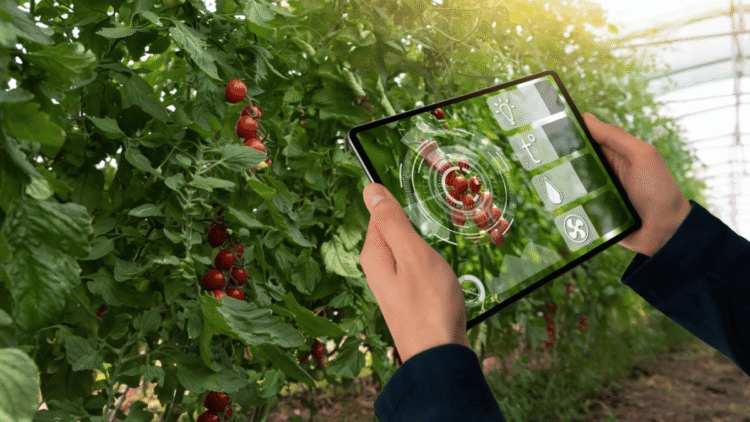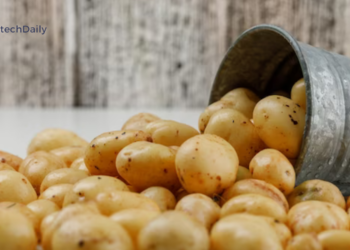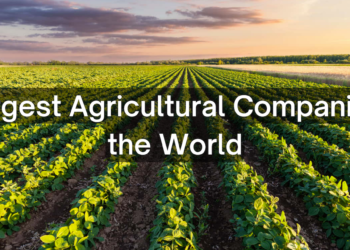The article is about the use of agricultural technology (Ag-tech) to improve resource efficiency in agriculture. The article discusses the challenges of resource use in agriculture and how ag-tech can help to address these challenges. It examines different ag-tech solutions and their benefits, highlighting the potential for increased efficiency, productivity, and sustainability in agriculture.
Agriculture is the backbone of many economies around the world. However, agriculture is facing numerous challenges, including the increasing demand for food, the scarcity of natural resources, and the need for sustainable practices.
To meet these challenges, the agricultural industry needs to find innovative ways to improve resource efficiency. One of the most promising ways to do this is through the use of agricultural technology, or ag-tech.
Agtech is an emerging field that combines technology, agriculture, and innovation. It refers to the use of technology in agriculture to increase efficiency, productivity, and sustainability. Agtech solutions can help farmers and other stakeholders in agriculture to manage resources more efficiently, reduce waste, and improve yields.
In this article, we will explore some of the ways ag-tech can improve resource efficiency in agriculture. We will examine different types of ag-tech solutions and their benefits, including precision farming, IoT, and AI-based solutions. We will also discuss some of the challenges and limitations of ag-tech and how these can be addressed.
Precision Farming
Precision farming is a farming practice that involves the use of technology to optimize crop yields and reduce waste. It involves the use of sensors, drones, and other tools to monitor crop growth and soil health. Precision farming can help farmers to reduce water and fertilizer use, improve yield, and increase profitability.
One of the main advantages of precision farming is that it allows farmers to make data-driven decisions about resource use. By collecting data on soil moisture, nutrient levels, and other factors, farmers can adjust their resource use to match the needs of the crop. This can help to reduce waste and improve yields.
IoT in Agriculture
The Internet of Things (IoT) is a network of connected devices that can communicate with each other to gather and analyze data. IoT has many applications in agriculture, including monitoring crop growth, soil health, and weather conditions. IoT can help farmers to optimize resource use and reduce waste.
IoT devices can collect data on temperature, humidity, soil moisture, and other factors. This data can be used to create models that predict crop growth and yield. Farmers can use these models to optimize resource use, reducing water and fertilizer use while maintaining crop yield.
AI-Based Solutions
Artificial intelligence (AI) is an emerging field that has many applications in agriculture. AI-based solutions can help farmers to optimize resource use, reduce waste, and improve yields. AI can be used to analyze data from IoT devices, drones, and other sources to identify patterns and make predictions about crop growth and yield.

AI can also be used to optimize resource use by creating models that take into account weather conditions, soil health, and other factors. AI can help farmers to make data-driven decisions about resource use, reducing waste, and improving yields.
Challenges and Limitations
While ag-tech has the potential to revolutionize agriculture, there are also some challenges and limitations that need to be addressed. One of the main challenges is the high cost of ag-tech solutions. Many farmers, particularly small-scale farmers, may not be able to afford the latest ag-tech solutions.
Another challenge is the lack of infrastructure and connectivity in many rural areas. IoT devices and other ag-tech solutions require reliable internet connectivity, which may not be available in some areas. This can limit the effectiveness of ag-tech solutions in these areas.
Conclusion
Agtech has the potential to improve resource efficiency in agriculture, reduce waste, and increase productivity. Precision farming, IoT, and AI-based solutions offer numerous benefits for farmers, including increased yields, reduced costs, and improved sustainability. However, there are also challenges and limitations to the use of ag-tech in agriculture.
To address these challenges, it is important to develop ag-tech solutions that are affordable, scalable, and accessible to all farmers. This may involve working with governments, private sector partners, and other stakeholders to develop innovative financing models and business models that can support the adoption of ag-tech.
In addition, it is important to invest in research and development to create new ag-tech solutions that can meet the unique needs of different farming contexts. This may involve developing solutions that are tailored to the specific challenges and opportunities of different crops, regions, and farming systems.
Ultimately, the adoption of ag-tech is a key step towards a more sustainable and resilient agricultural sector. By improving resource efficiency and reducing waste, ag-tech can help to address the challenges of climate change, food security, and environmental degradation.
As such, it is important to continue to support the growth and development of the ag-tech industry to ensure a more sustainable and prosperous future for agriculture.













